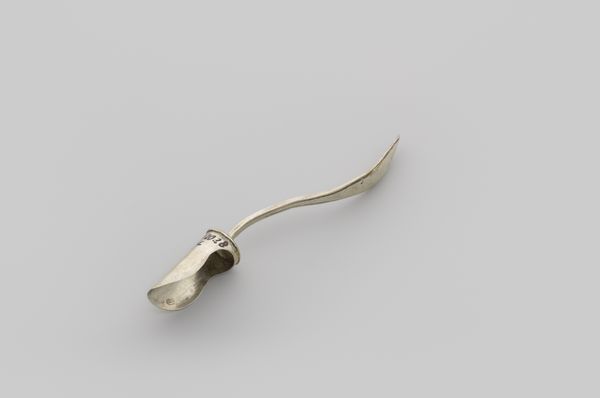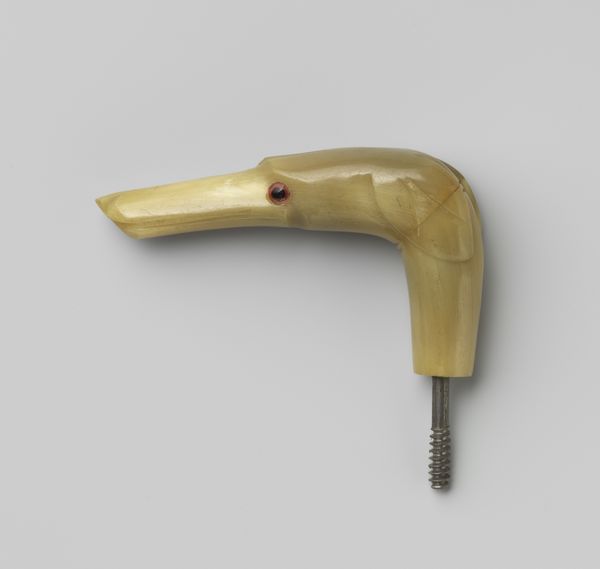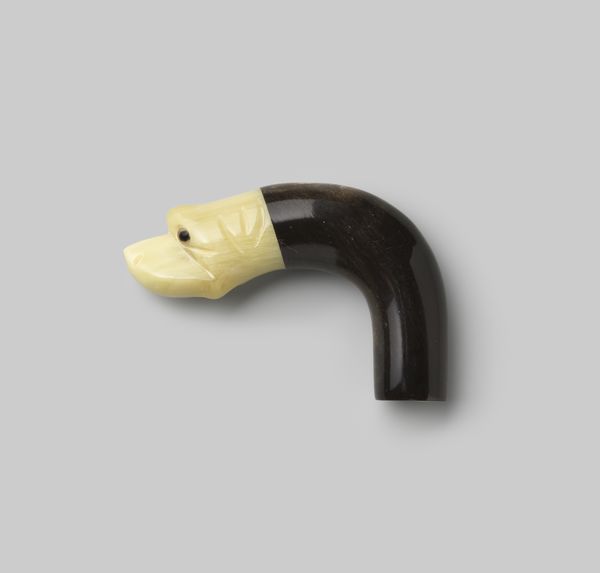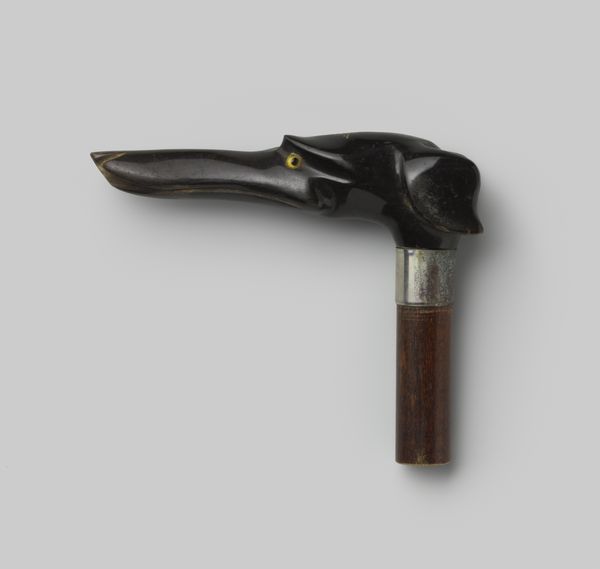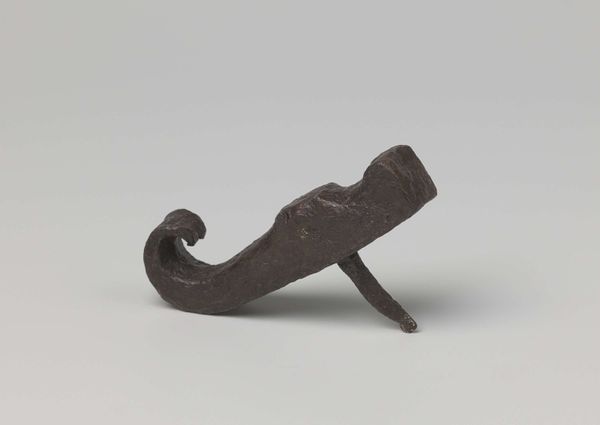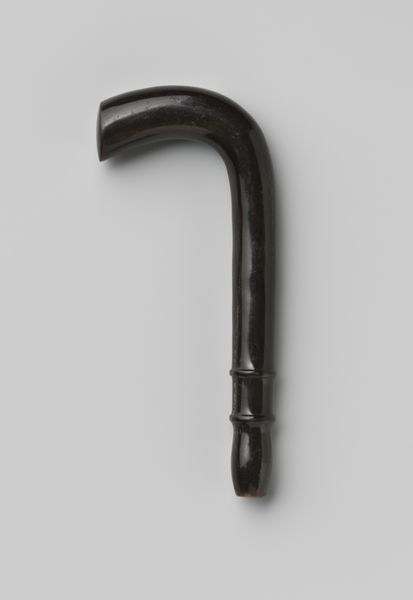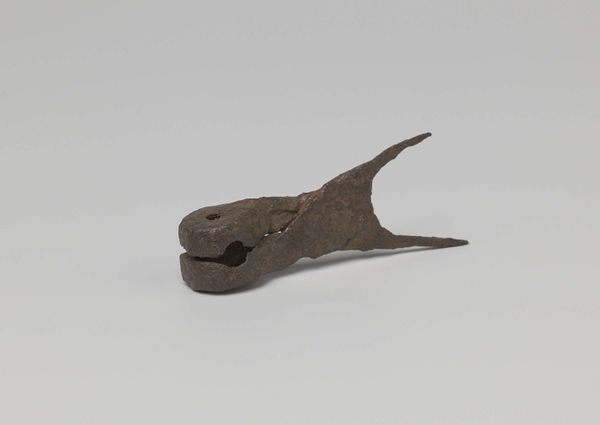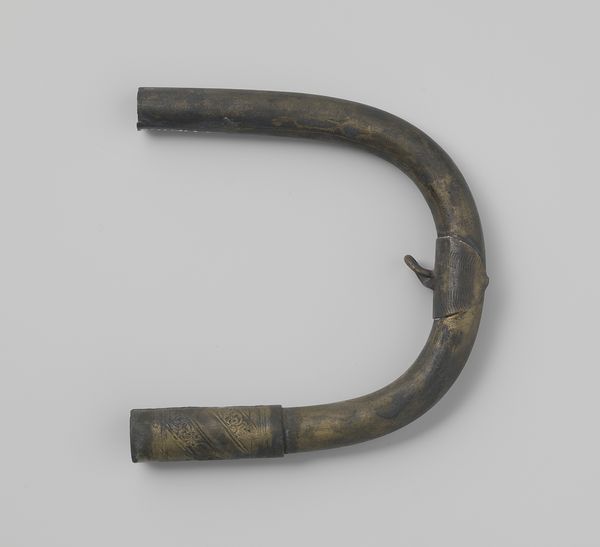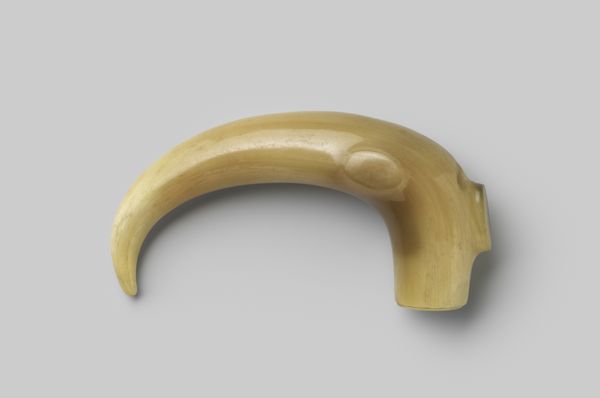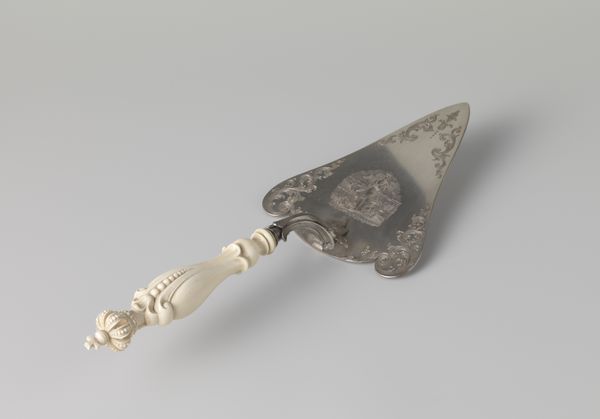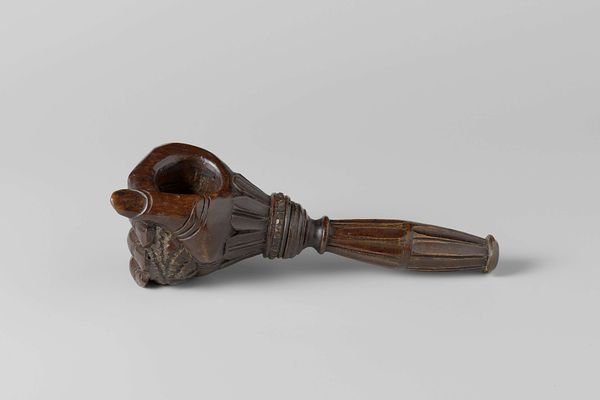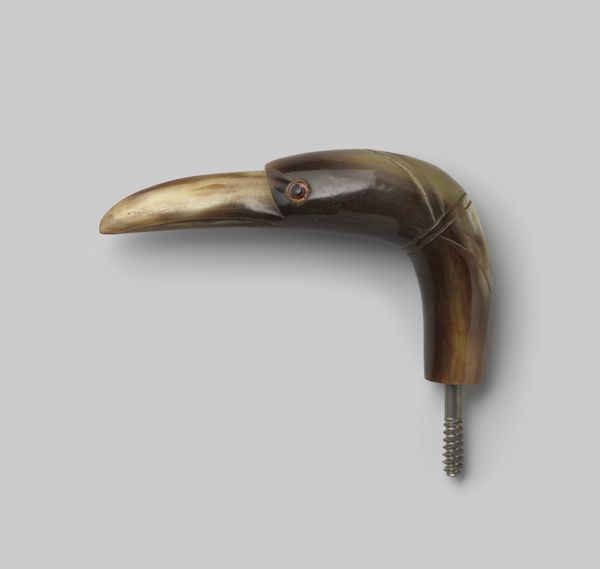
carving, sculpture, wood
#
art-nouveau
#
carving
#
figuration
#
sculpture
#
wood
#
decorative-art
Dimensions: length 4.2 cm, width 6.3 cm, height 1.5 cm
Copyright: Rijks Museum: Open Domain
Curator: Here we have an object crafted sometime between 1900 and 1930, a "Knop van zwart hoorn, eindigend in een hondenkop van beige-bruin hoorn"—or, a knob of black horn ending in a dog’s head of beige-brown horn. It's an exquisite example of carving, most likely intended as a decorative element for a walking stick or similar item. Editor: Oh, my god. If I found this in my grandmother's house, I would immediately imagine it held secrets. It's like a canine sphinx, all compressed power and knowing glances. Curator: The form adheres quite closely to Art Nouveau aesthetics, with its emphasis on natural forms, and the graceful, almost sinuous line of the horn itself. Note the contrast between the dark, polished body and the lighter hue of the dog’s head. It’s a study in tonal relationships. Editor: Right? The artist has an almost palpable love for their subject. It isn't just a dog's head; it has *personality*. See the way the light catches those incised eyes? You feel it, almost touch it, you know? Curator: Indeed. Semiotically, the dog can represent fidelity, guidance, or even protection. Combining this with the functional element of a walking stick implies a very specific, possibly aspirational symbolism for the owner. It also displays the period’s emphasis on decorative art. Editor: Aspirational, yes! This object, as a functional work of art, also points to accessibility—art in service of living. Someone used it as they moved through their day, which gives this, beyond mere sculpture, an appealing tactile sense to it. The smoothed texture implies warmth, connection. Curator: Absolutely. The beauty here arises from that interplay of practical function and sculptural embellishment, which characterizes Art Nouveau so well. This dog’s head isn’t just ornamentation. It enriches the experience of even the most mundane movement. Editor: Looking at this, it really makes you think about what you'd choose to carry, you know? That’s quite interesting considering a mundane detail from, say, a century back can invite, even coax you to feel again! Curator: Indeed, and perhaps that is the magic, or the allure, in studying how the convergence of material, design, and human touch brings forgotten things back to the surface again.
Comments
No comments
Be the first to comment and join the conversation on the ultimate creative platform.

